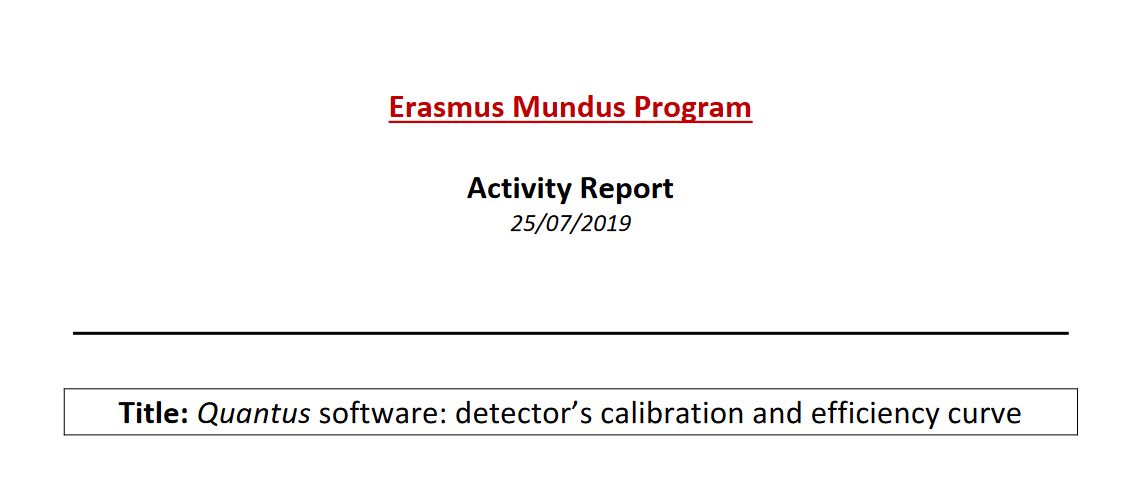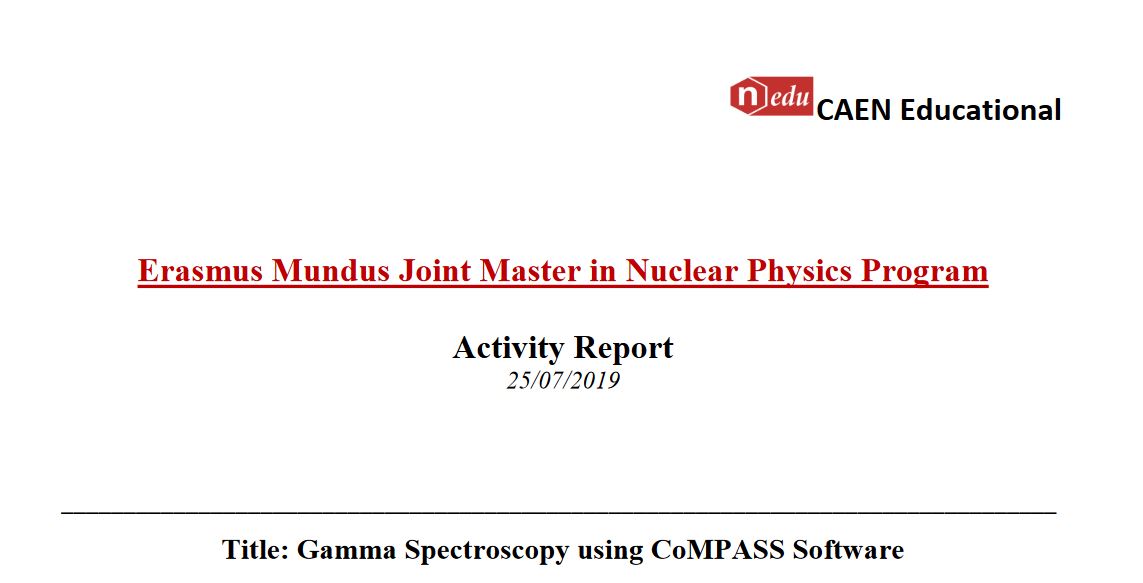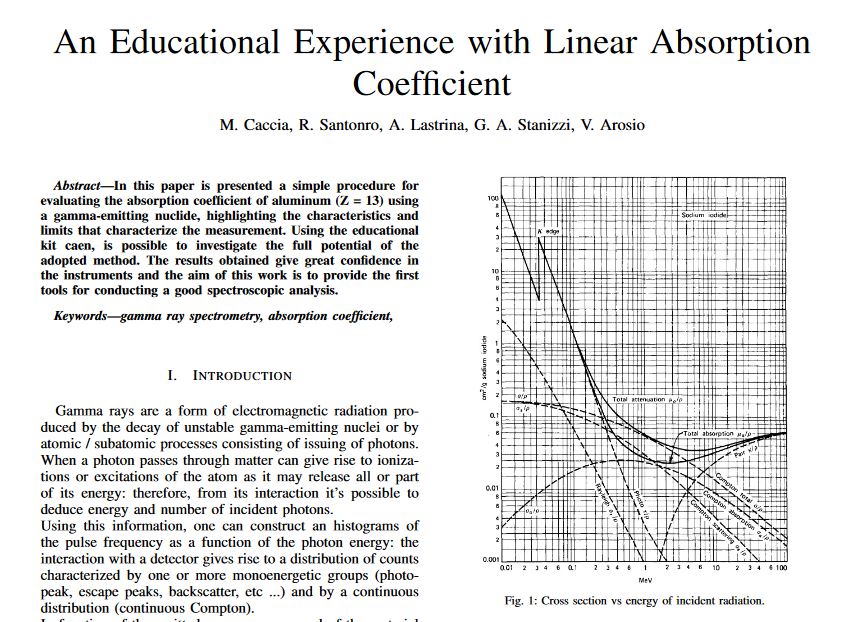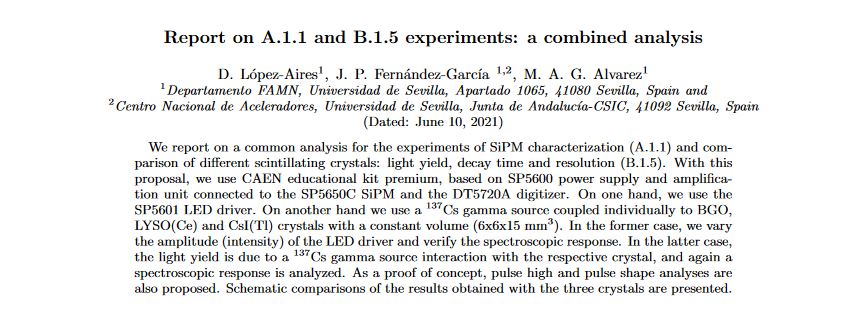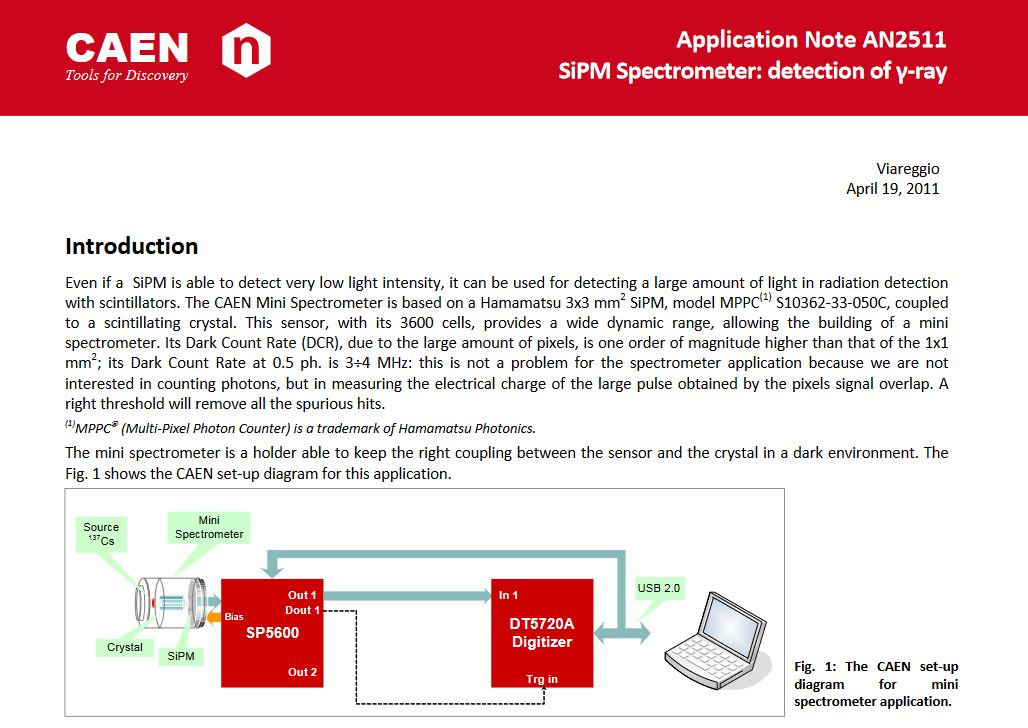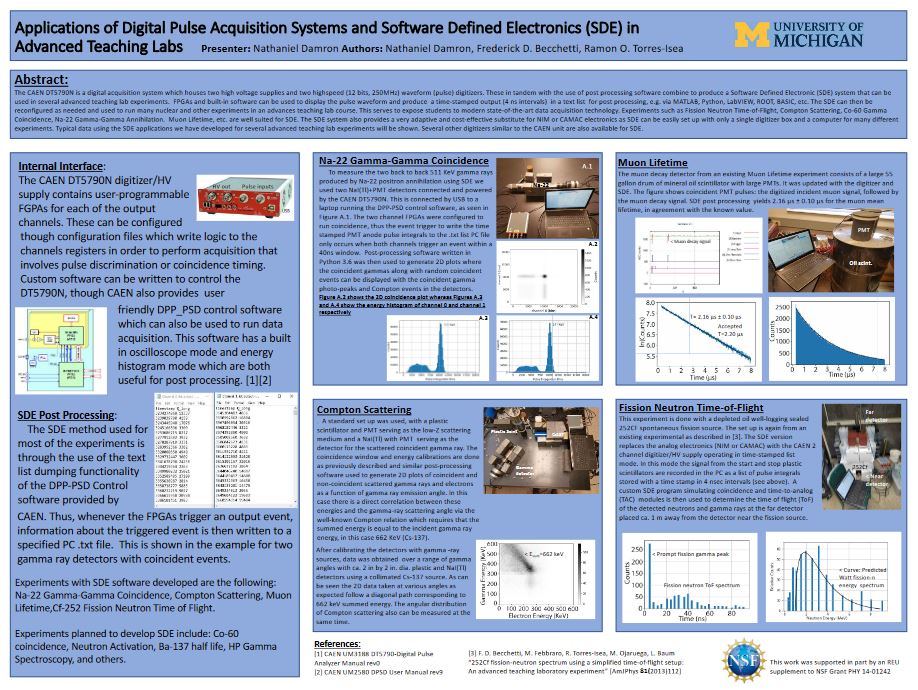All “Gamma Spectroscopy” experiments
Erasmus Mundus Program: Quantus software detector’s calibration and efficiency curve
Detectors need calibration before starting data acquisition in both energy and full width half maximum of the signal (FWHM). The first requires multiple known energy peaks so several gamma sources are used, while the second is related to the fact of having Gaussian distribution shapes in the spectrum centred in the peak energy instead of a sharp shape. All the spectra collected and calibration done bring the possibility of calculate the efficiency of the detector, which is a curve showing the relation between energy and efficiency. Thanks to that curve scientists are able to set the best conditions for the acquisition, as well as to determine the activity of an unknown source. Quantus is CAEN high performance software to make Quantitative Spectrometry with Hexagon digital MCA. It permits working with many spectra at the same time. Since it allows setting parameters in the hardware, collecting data and analysing them, it is a useful tool for calibration purpose.

